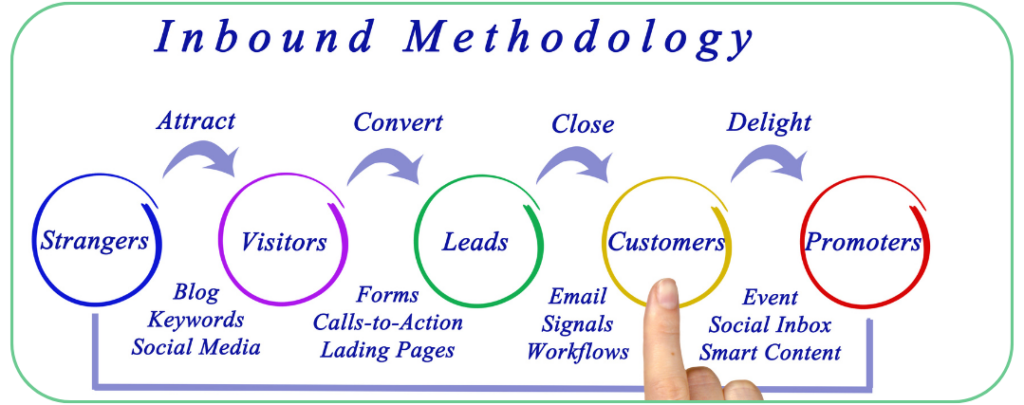In the world of sales and marketing, there are two main approaches: inbound and outbound. Each has its own unique benefits and applications. In this blog post, we will take a closer look at both strategies and help you decide which one is best for your business.
Inbound sales: attracting interested customers
Inbound sales is based on the idea that potential customers come to you, rather than you actively approaching them. This approach revolves around creating valuable content and attracting leads through various channels, such as blogs, social media, search engine optimisation (SEO), and email marketing. Some of the benefits of inbound sales are:
- Faster decision : When potential customers come to you, they usually know what you can help them with and what they can expect from you. So they are already a lot further along in the decision-making process.
- Trust and authority : By sharing useful and wordy content, you build trust and authority in your industry.
- Increasing brand awareness : By formatting valuable content, you not only reach your potential customer, but this customer can also ensure that your message reaches others.

Outbound Sales: actively approaching potential customers
Outbound sales, on the other hand, is based on actively prospecting and approaching potential customers. This can include cold calls, direct emails, and the use of ads on social media. Some benefits of outbound sales include:
- Direct Response : Outbound sales can deliver quick results because you make direct contact with prospects.
- Targeting : Outbound sales is ideal for companies looking to target a specific audience, especially in B2B markets.
- More personal : You choose who you are going to approach and potentially add to your customer base.
Which approach should you take?
Choosing between inbound and outbound sales depends on several factors, including your target audience, industry, and resources. Here are some considerations to help you decide:
- Target audience : If you have a niche audience that is hard to reach, outbound sales can be more effective.
- Resources : Inbound sales often require investment in content creation and SEO, while outbound sales is usually a more direct approach.
- Time horizon : Inbound sales can take longer to bear fruit, while outbound sales can deliver faster results.
- Combination : Many companies combine both approaches to create a balanced strategy.
The important thing is to understand that there is no "one-size-fits-all" approach. What works for one company may not work for another. It is essential to experiment, measure and adapt to find the ideal strategy for your business.
In practice, we often see successful companies using both inbound and outbound sales, depending on the situation and objectives. It's all about finding the right balance and matching the needs of your target audience.
Regardless of which approach you take, remember that sales is all about solving problems for customers and adding value to their lives. With this focus, you can effectively use both inbound and outbound sales to grow your business.



